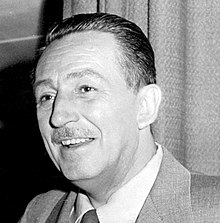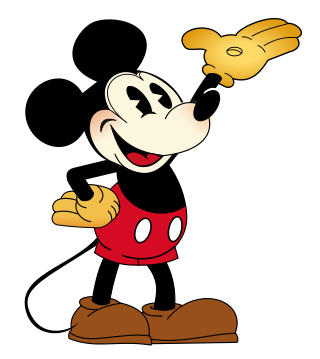
Mickey Mouse is an American cartoon character co-created in 1928 by Walt Disney and Ub Iwerks. The longtime icon and mascot of the Walt Disney Company, Mickey is an anthropomorphic mouse who typically wears red shorts, large shoes, and white gloves.

Pete is a cartoon character created by Walt Disney and Ub Iwerks of The Walt Disney Company. Pete is traditionally depicted as the villainous arch-nemesis of Mickey Mouse, and was made notorious for his repeated attempts to kidnap Minnie Mouse. Pete is the oldest continuing Disney character, having debuted in the cartoon Alice Solves the Puzzle in 1925. He originally bore the appearance of an anthropomorphic bear, but with the advent of Mickey in 1928, he was defined as a cat.

Mickey Mouse Works is an American animated television series produced by Walt Disney Television Animation featuring Mickey Mouse and his friends in a series of animated shorts. The first Disney television animated series to be produced in widescreen high definition, it is formatted as a variety show, with skits starring Mickey Mouse, Minnie Mouse, Donald Duck, Daisy Duck, Goofy, Pluto and Ludwig Von Drake while Horace Horsecollar, Clarabelle Cow, Morty and Ferdie Fieldmouse, Huey, Dewey and Louie, Chip 'n' Dale, Scrooge McDuck, Pete, Humphrey the Bear, J. Audubon Woodlore, Dinah the Dachshund, Butch the Bulldog, Mortimer Mouse, José Carioca, and Clara Cluck appear as supporting or minor characters. Musical themes for each character were composed by Stephen James Taylor with a live 12-piece band and extensive use of the fretless guitar to which the music of the series was nominated for an Annie Award in both 1999 and 2001. Most of the shorts from the series were later used in House of Mouse.
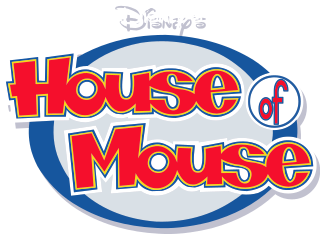
Disney's House of Mouse is an American animated television series produced by Walt Disney Television Animation that originally aired on ABC and Toon Disney from January 13, 2001, to October 24, 2003, with 52 episodes and 22 newly produced cartoon shorts made for the series. The show focuses on Mickey Mouse and his friends running a cartoon theater dinner club in the fictional setting of ToonTown, catering to many characters from Disney cartoons and animated movies while showcasing a variety of their cartoon shorts. The series is named after a common nickname or epithet for the Walt Disney Company.

Plane Crazy is a 1928 American animated short film directed by Walt Disney and Ub Iwerks. The cartoon, released by the Walt Disney Studios, was the first appearance of Mickey Mouse and his girlfriend Minnie Mouse, and was originally a silent film. It was given a test screening to a theater audience on May 15, 1928, and an executive from Metro-Goldwyn-Mayer saw the film, but failed to pick up a distributor. Later that year, Disney released Mickey's first sound cartoon, Steamboat Willie, which was an enormous success; Plane Crazy was officially released as a sound cartoon on March 17, 1929. It was the fourth Mickey film to be given a wide release after Steamboat Willie, The Gallopin' Gaucho and The Barn Dance (1929).

Clarabelle Cow is a cartoon character created by The Walt Disney Company. As an anthropomorphic cow, Clarabelle is one of Minnie Mouse's best friends. She was once depicted as the girlfriend of Horace Horsecollar, although now she is often paired with Goofy.

The Mickey Mouse universe is a fictional shared universe which is the setting for stories involving Disney cartoon characters, including Mickey and Minnie Mouse, Donald and Daisy Duck, Pluto and Goofy as the primary members, and many other characters related to them, being most of them anthropomorphic animals. The universe originated from the Mickey Mouse animated short films produced by Disney starting in 1928, although its first consistent version was created by Floyd Gottfredson in the Mickey Mouse newspaper comic strip. Real-world versions also exist in Disneyland and Tokyo Disneyland, called Mickey's Toontown.

Horace Horsecollar is a cartoon character created in 1929 at Walt Disney Animation Studios. Horace is a tall anthropomorphic black horse and is one of Mickey Mouse's best friends. Characterized as a boastful show-off, Horace served as Mickey’s sidekick in Disney's early black-and-white shorts.

The Gallopin' Gaucho is a 1928 American animated short film and the second short film featuring Mickey Mouse to be produced, following Plane Crazy and preceding Steamboat Willie. The Disney studios completed the silent version in August 1928, but did not release it in order to work on Steamboat Willie. The Gallopin' Gaucho was released, with sound, after Steamboat Willie on December 30 of the same year.

Mickey Mouse is a series of American animated comedy short films produced by Walt Disney Productions. The series started in 1928 with Steamboat Willie and ended in 2013 with Get a Horse!, taking a hiatus from 1953 to 1983. The series is notable for its innovation with sound synchronization and character animation, and also introduced well-known characters such as Mickey Mouse, Minnie Mouse, Donald Duck, Daisy Duck, Pluto and Goofy.
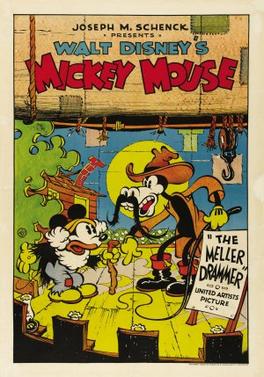
Mickey's Mellerdrammer is a 1933 American animated short film produced by Walt Disney Productions and released by United Artists. The title is a corruption of "melodrama", thought to harken back to the earliest minstrel shows, as a film short based on Harriet Beecher Stowe's 1852 anti-slavery novel Uncle Tom's Cabin and stars Mickey Mouse and his friends who stage their own production of the novel. It was the 54th Mickey Mouse short film, and the fourth of that year.

Mickey's Gala Premier is a Walt Disney cartoon produced in 1933, directed by Burt Gillett, and featuring parodies of several famous Hollywood film actors from the 1930s. It was the 58th Mickey Mouse short film, and the eighth of that year.
The second wave of Walt Disney Treasures was released December 3, 2002. This was the final wave with the tin's individual number embossed on the tin.
Mickey's Surprise Party is a 1939 American animated short film directed by Hamilton Luske, produced by Walt Disney Productions and distributed by National Biscuit Company. It was the 105th short in the Mickey Mouse film series to be released, and the second for that year. Mickey's Surprise Party is the first cartoon with Mickey and Minnie Mouse in their current designs, created by animator Fred Moore.
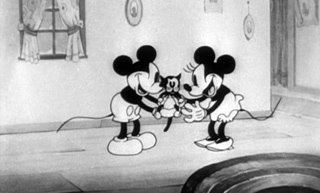
Mickey's Orphans is a 1931 American animated short film produced by Walt Disney Productions and released by Columbia Pictures. The cartoon takes place during Christmas time and stars Mickey Mouse, Minnie Mouse, and Pluto, who take in a group of disruptive and mischievous kittens. It is directed by Burt Gillett and features the voices of Walt Disney as Mickey and Marcellite Garner as Minnie. It was the 36th Mickey Mouse film, the twelfth of that year.

Minnie's Bow-Toons is an American animated preschool television series from Disney Television Animation. The series aired from November 14, 2011, to January 22, 2016, on Disney Junior, as a short-form series targeted at very young girls, as well as the spin-off from Mickey Mouse Clubhouse. The series is based on the Mickey Mouse Clubhouse episode "Minnie's Bow-tique". In both the episode and its spin-off, Minnie opens the same boutique from the former - this time with bows and bow-ties.

Hawaiian Holiday is a 1937 American animated short film produced by Walt Disney Productions and released by RKO Radio Pictures. The cartoon stars an ensemble cast of Mickey Mouse, Minnie Mouse, Pluto, Donald Duck, and Goofy while vacationing in Hawaii. The film was directed by Ben Sharpsteen, produced by John Sutherland and features the voices of Walt Disney as Mickey, Marcellite Garner as Minnie, Clarence Nash as Donald, and Pinto Colvig as Goofy and Pluto. It was Disney's first film to be released by RKO, ending a five-year distributing partnership with United Artists.

The Cactus Kid is a Mickey Mouse short animated film first released on May 10, 1930, as part of the Mickey Mouse film series. It was the eighteenth Mickey Mouse short to be produced, the third of that year.
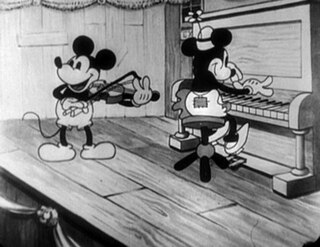
The Shindig is a Mickey Mouse short animated film first released on July 11, 1930, as part of the Mickey Mouse film series. It was the twentieth Mickey Mouse short to be produced, the fifth of that year.





